Hoe Nam Bak Kut Teh: Rich Claypot BKT with tender pork knuckle from famous prawn noodle franchise
There’s hardly a time I ever consider bak kut teh for a full meal given my aversion to the herbal variation. But if there’s one thing that could sway me, it’s an established local franchise stepping into the BKT business, especially if they’re as popular as River South (Hoe Nam) Prawn Noodles.
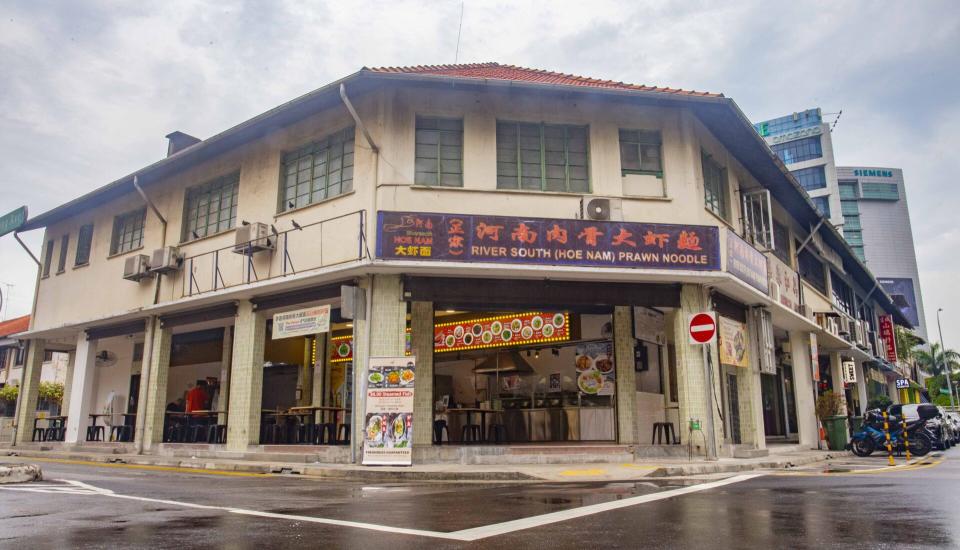
In Jun 2023, River South Hoe Nam Prawn Noodles departed from its 25-year location, shifting across the street into a modern, air-conditioned eatery. While certainly bittersweet, Hoe Nam Bak Kut Teh opened on 1 Aug in its place, bringing an entirely different suite of dishes to the public and marking another big milestone since their humble beginnings in the 1970s.
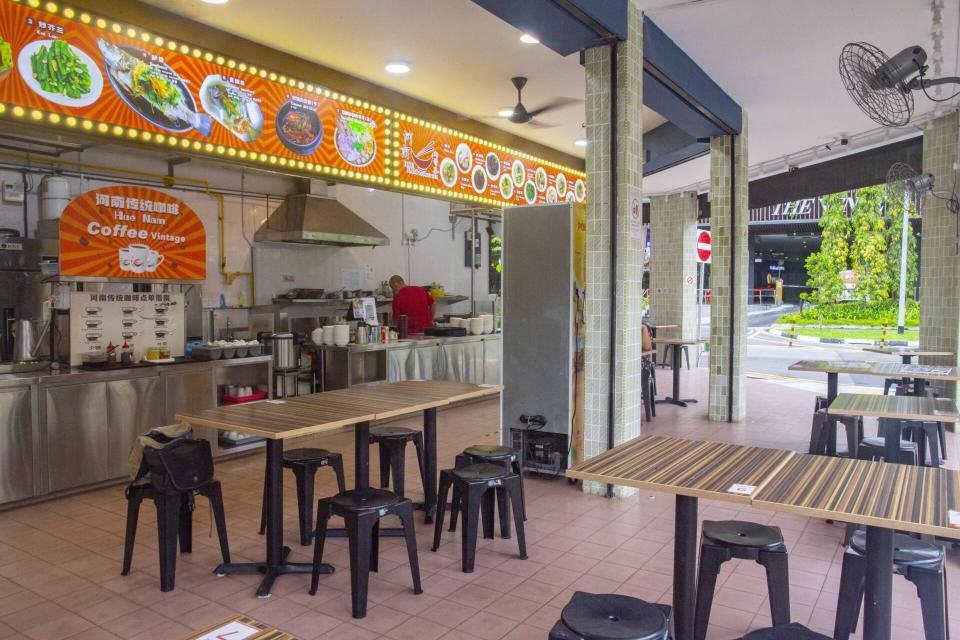
Just a short walk from Potong Pasir MRT Station, this relatively new eatery has retained its open coffeeshop-style seating, which makes for a familiar atmosphere to those who used to frequent the former prawn noodle flagship location.
What I tried at Hoe Nam Bak Kut Teh
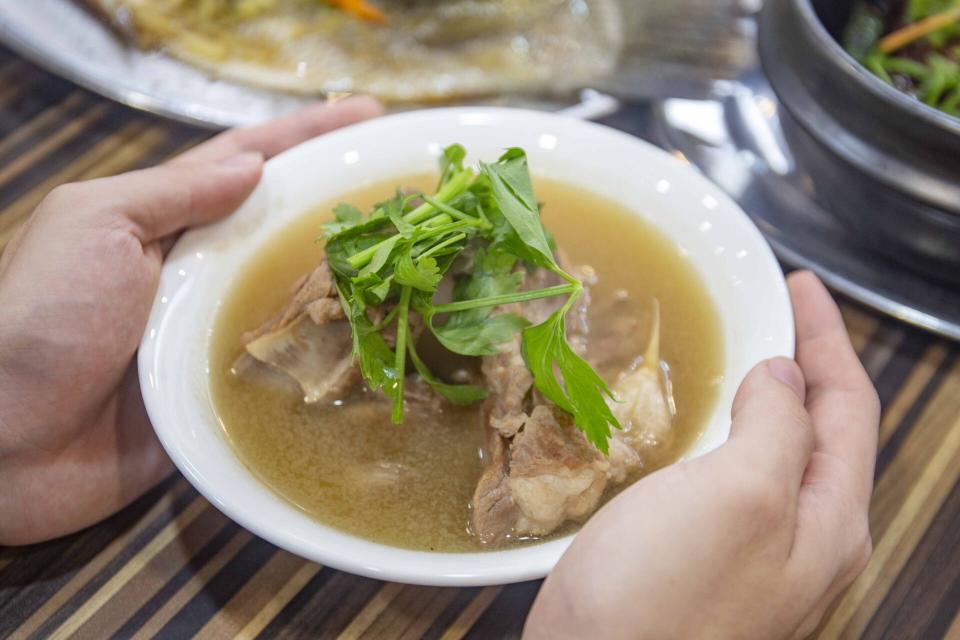
The recipe for Hoe Nam Bak Kut Teh’s Spare Ribs (S$7) rou gu cha is somewhat of a mix of both styles. It possesses Teochew’s peppery base while also borrowing aspects of the Hokkien approach. A liberal garnishing of coriander and carrot strips had been placed on the half-submerged ribs.
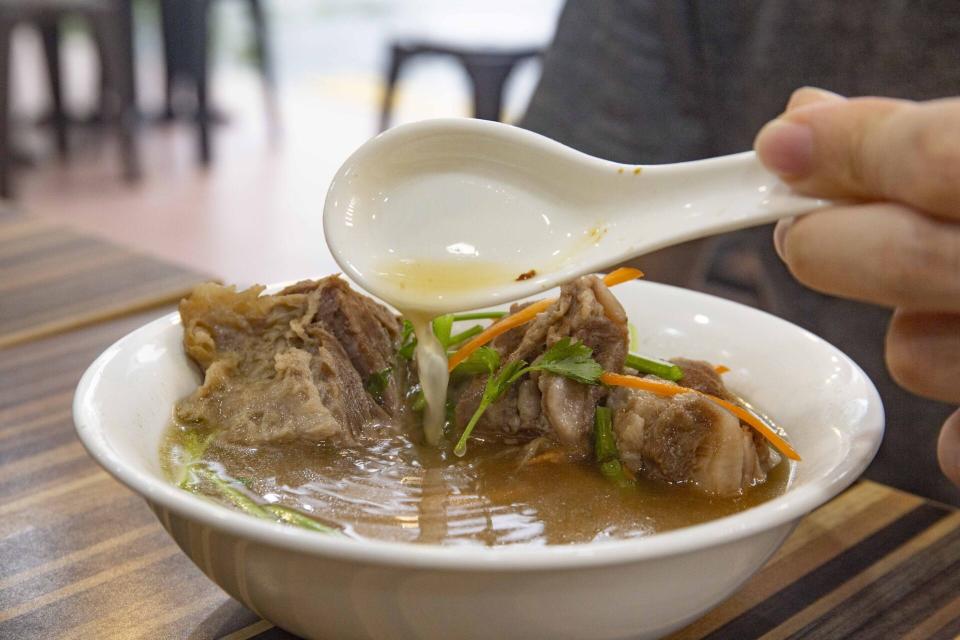
The first thing we noticed even before bringing the spoons to our mouths was an incredibly peppery fragrance. On sipping, the soup delivered strong, repeated kicks to our senses. Not so overwhelming that we were put off, and brief enough that the soup was stimulating as we swallowed.
True to their original recipe, it was also punctuated with herbal notes that gave the delicate sweetness even more lift. As the bowl drained, I saw at least 1 full head of garlic resting at the bottom.
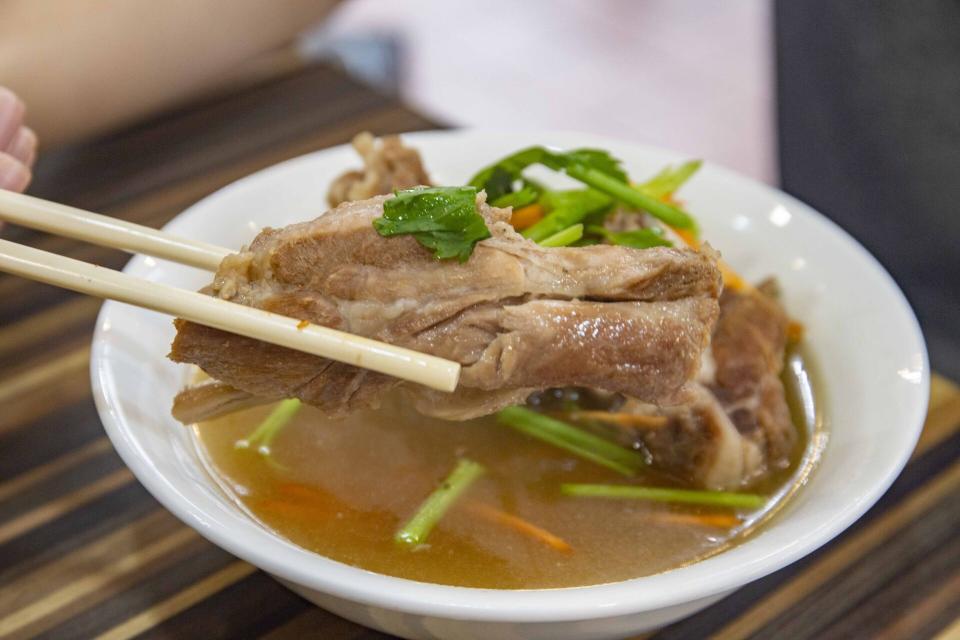
Given the use of pork ribs in both prawn noodles and bak kut teh, I was expecting more tender meat. Most pieces were undeniably soft and easily coaxed off the bone but I also encountered tougher, chewier portions that presented somewhat of a challenge (ah yes, the result of another lengthy shoot). My companions faced no issue biting into them whatsoever.
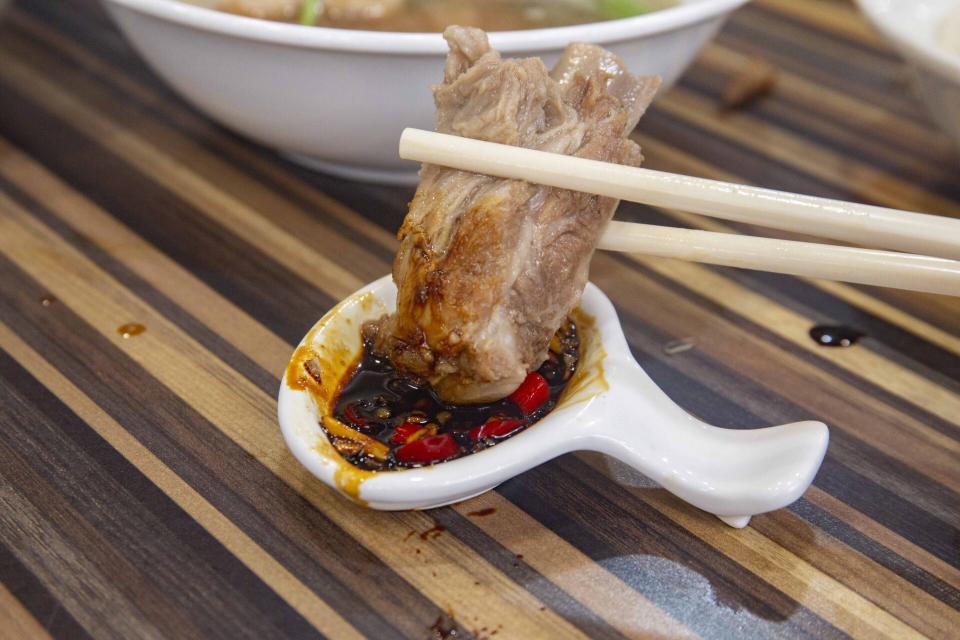
Condiments are freely available for the taking. We opted for some dark soy sauce with chilli, giving the thick chunks a deep, earthy scent that dug through the bak kut teh’s less impactful fragrance. The sauce tapers off to a subtly bitter close, tacking on depth to a lightly sweet profile.
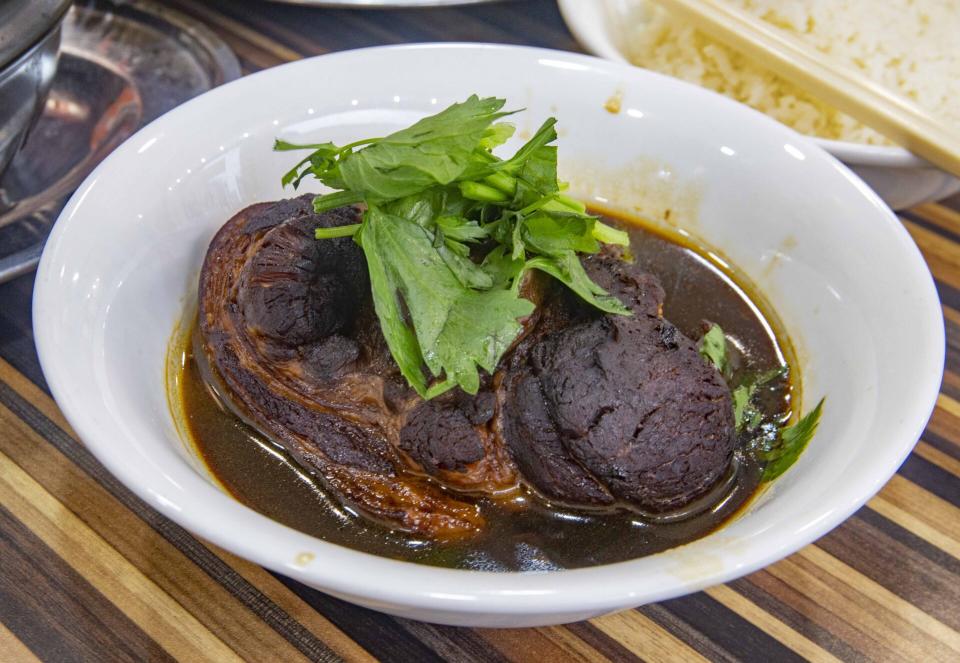
The Braised Pork Knuckle (S$7.80) was a simple yet alluring side dish served with a dark moat of gravy encircling a full hock topped by coriander leaves.
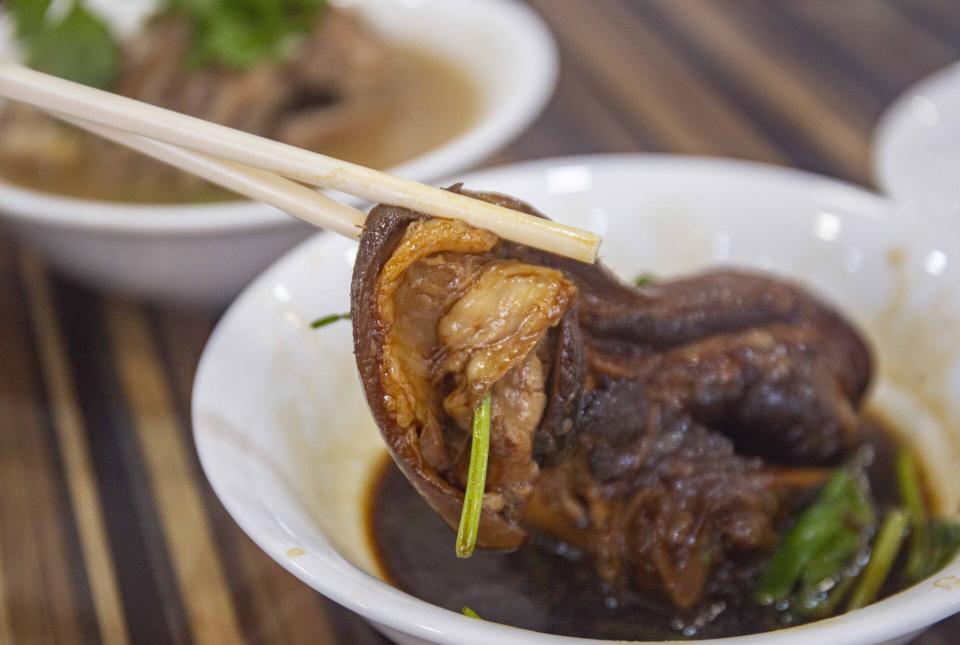
When I attempted to pry it apart with a single pair of chopsticks, the skin readily gave way like some chivalrous gentleman.
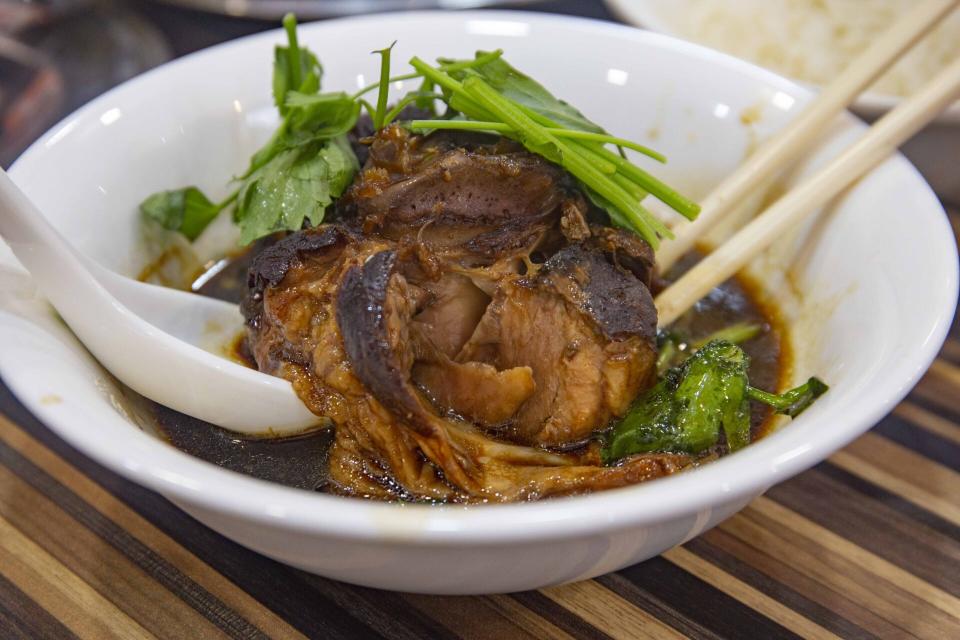
Despite the inclement weather and a lengthy shoot, the braised meat was gob-smackingly succulent. The ridiculously high ratio of fat made each piece a decadent trip down Cholesterol Lane as I chewed through the varying soft textures tinted in the sweet-savoury braising sauce.
Whatever meaty presence there was only served to accentuate each bite of this fatty cut. I don’t use the term lightly, so rest assured that the knuckle had been cooked to achieve peak fork-tender-ness.
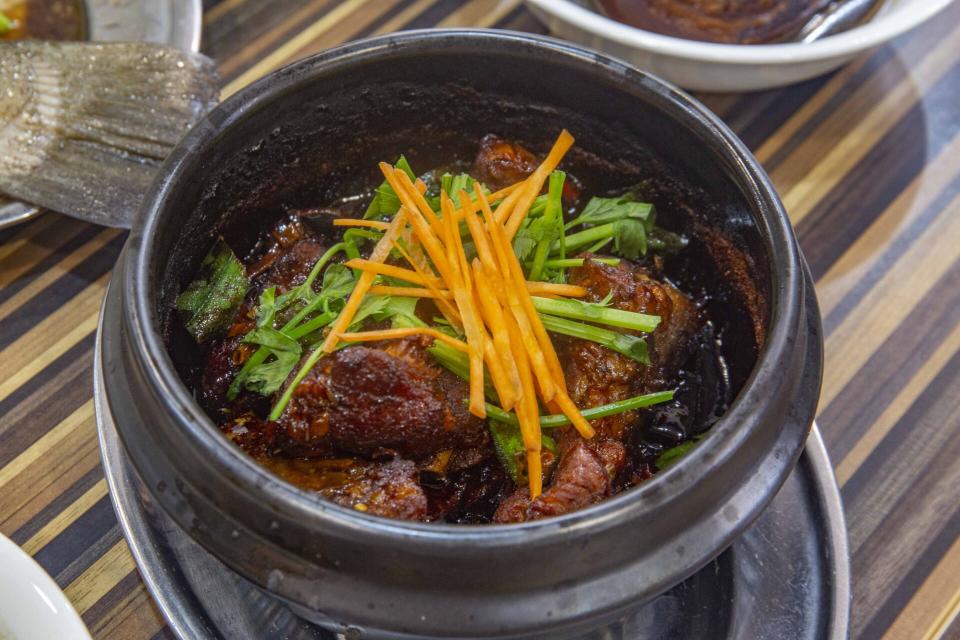
The highs just kept coming. Next was their rendition of Claypot Bak Kut Teh (Dry) (S$13.90). We had watched the head chef cook the pork ribs to a darkened shade in the gravy, the recipe for which we had been told was closely guarded.
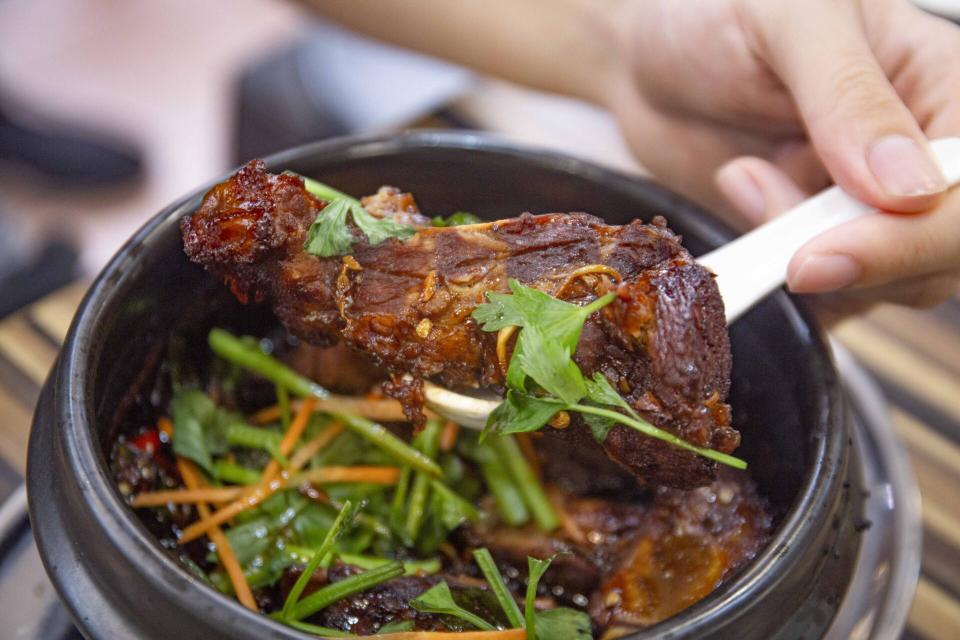
The thick gravy’s colour aside, there were also gradients of wine dotting the surface of each rib. Their size is much like those in the bowl of Spare Ribs – a hefty challenge for a pair of chopsticks. Resting in the gravy were dried cuttlefish strips, chilli, and lady’s finger.
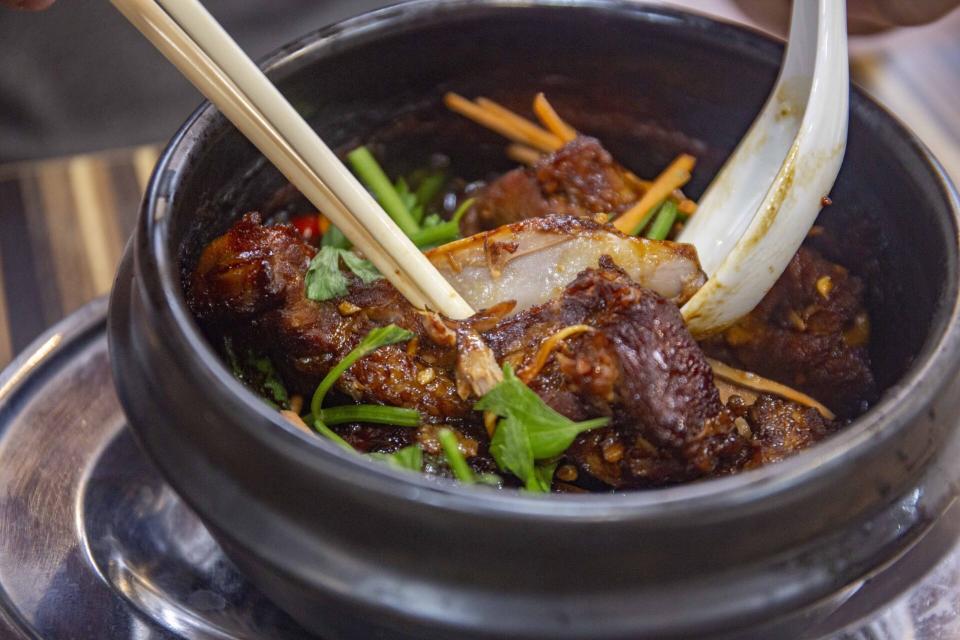
No number of photos can depict how cleanly the meat parted from the bone. It took just one smooth motion of the chopsticks across its length to separate the two. Unlike the pork knuckle, the ribs were much meatier and offered a good chew.
What sets the dry bak kut teh apart from the other dishes is how the gravy intermingled with the meat. Much, much richer with a touch of umami and a gentle warmth from the dried cuttlefish and chillies. Safe to say, I was a huge fan.
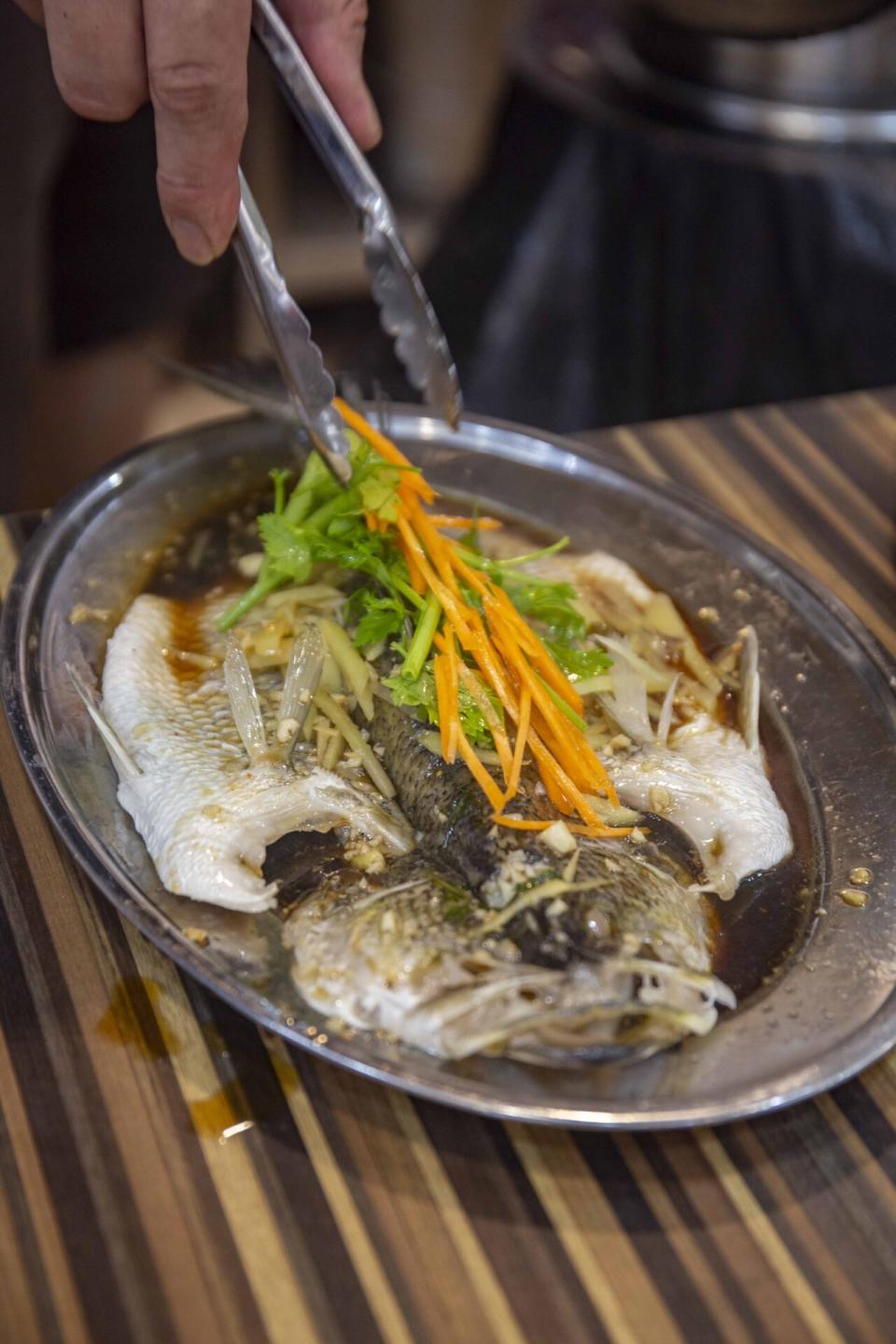
Hoe Nam Bak Kut Teh guarantees that their steamed fish is fresh; if you find it lacking, the dish can be returned for a refund.
It felt like daylight robbery on our part for a whole Steamed Seabass to be priced at just S$12.90. The fish itself was served immediately out of a steamer and presented with its sides splayed out with their trademark garnishing and a shallow pool of seasoned soya sauce.
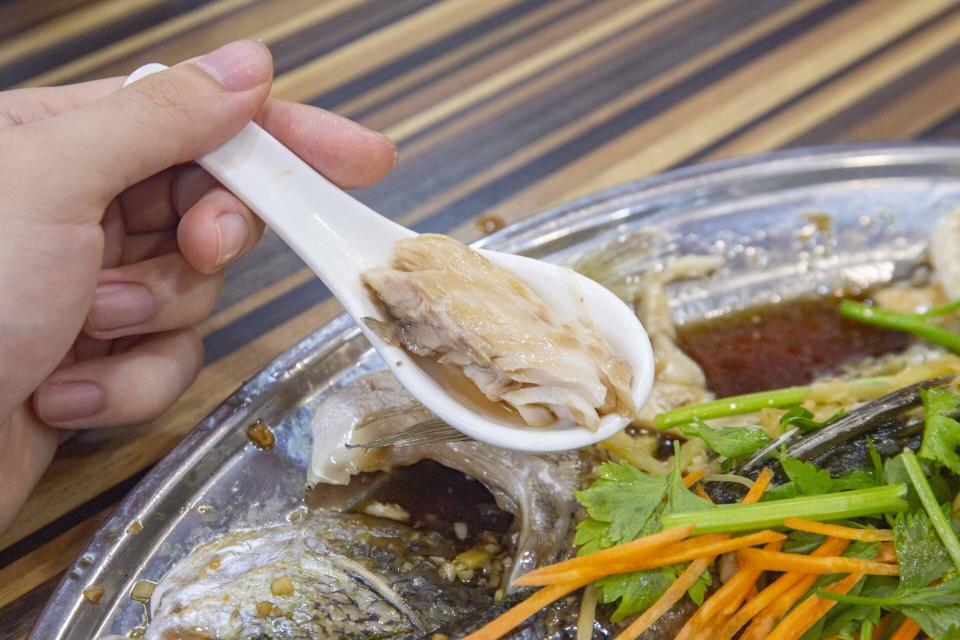
Because it had been sliced through the middle and laid out flat, the meat on both sides was easily accessible. Simply bracing with chopsticks and scooping with the spoon was enough to shear off a proper chunk. Its texture was a nice balance of firm and flaky, and importantly, complemented the soya sauce to a fault.
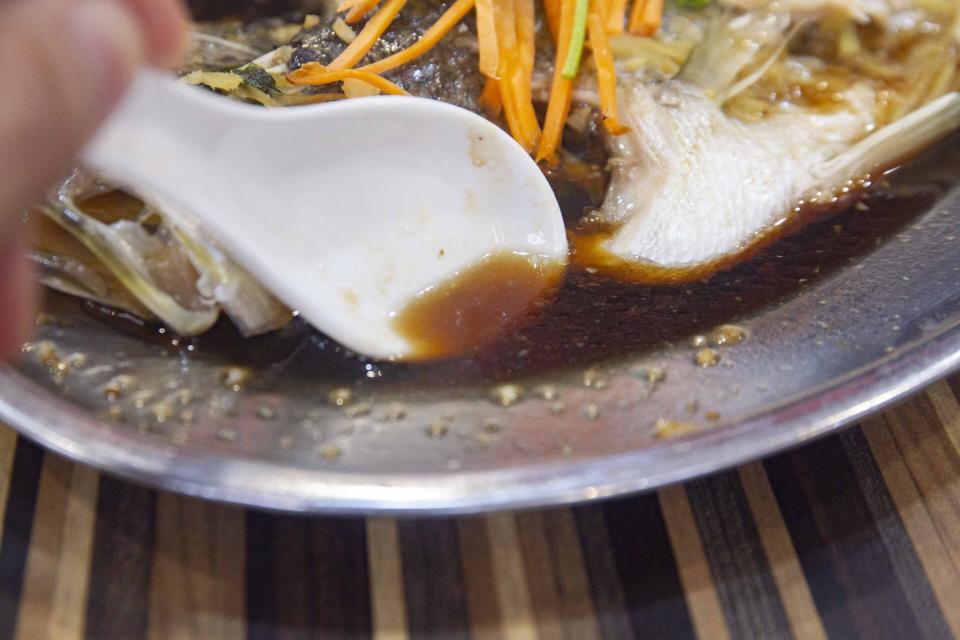
Equally deserving of the spotlight, the sweetened soya sauce brings a gentle touch to the steamed fish and dipping every piece of fish in it was a must for me. Some ginger and fine garlic also provided light nudges on occasion, making it a varied palate trip.
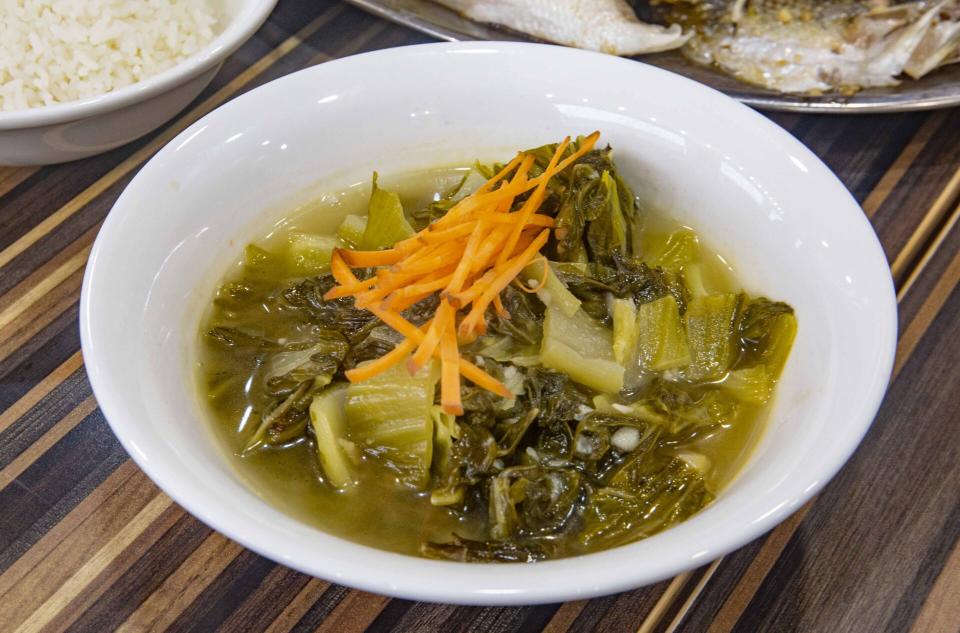
The Salted Vegetables (S$2.50) are pickled to achieve a delectable combination of sweet and savoury. This dish requires a significant amount of rice for company as it can get overwhelming with consecutive spoonfuls.
We were told this is a popular choice among diners, and it’s easy to see why. There’s plenty here for palate cleansing or as a harder-hitting dish to contrast the milder dishes.
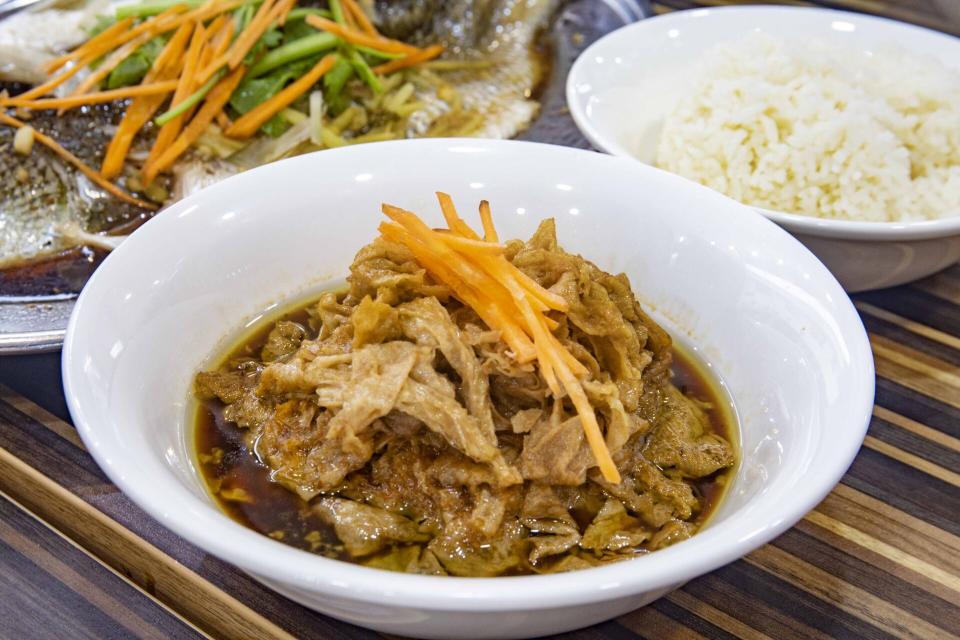
Not much needs to be said about the Braised Tau Kee (S$3). The heap of tofu skin had soaked up so much of the braising liquid, I could swear it squelched when I hastily stuffed the sheets in my mouth. Part-tender, part-chewy, their unique texture ensures you’re not chowing down a homogenous mash of soft foods for a meal.
Final thoughts
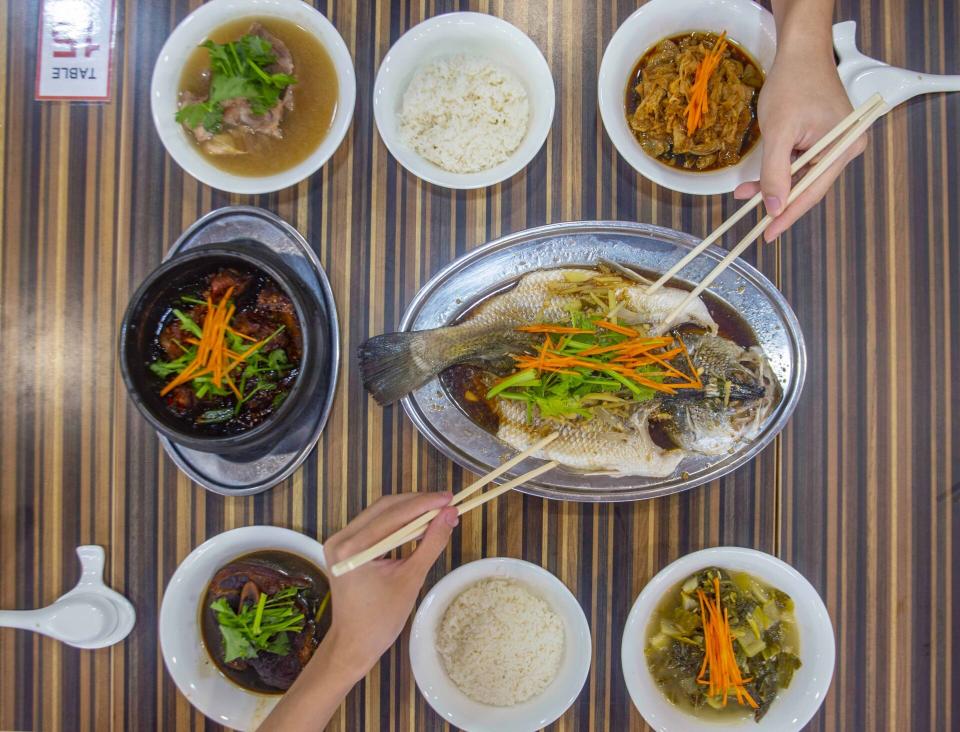
I thoroughly enjoyed pretty much all of the dishes at Hoe Nam Bak Kut Teh, though some much more than others. In particular, both the Braised Pork Knuckle and Claypot Bak Kut Teh (Dry) had my taste buds by the throat the entire time.
The pork ribs of both BKT variations, at least to my companions, were decidedly tender. If you’re a huge fan of the Teochew style, the Spare Ribs rou gu cha and, by extension, their Signature Claypot BKT (Soup) (S$18.90) and Premium Spare Ribs (S$10.80) should be up for contention as the highlight.
Regardless, the Claypot BKT (Dry) is definitely worth a try as well for its more robust flavours. If you’re planning to drop by, don’t forget about their remarkably affordable steamed fish.
Expected damage: S$6.50 – S$11 per pax
The post Hoe Nam Bak Kut Teh: Rich Claypot BKT with tender pork knuckle from famous prawn noodle franchise appeared first on SETHLUI.com.


